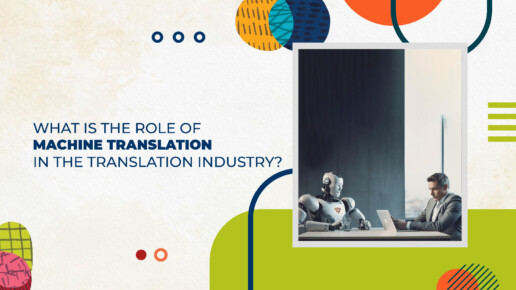What is the Role of Machine Translation in the Translation Industry?
In today’s globalized world, communication across languages has never been more critical. Machine Translation (MT) has emerged as a powerful tool in the translation industry, offering a blend of speed, efficiency, and accessibility. But what exactly is machine translation, and how has it transformed the way we bridge linguistic gaps?
What is Machine Translation (MT)?
Machine Translation is the process of using artificial intelligence to translate text or speech from one language to another automatically. Unlike traditional translation methods that rely on human translators, MT leverages advanced algorithms and vast datasets to perform translations.
Brief History of Machine Translation
The concept of MT dates back to the mid-20th century, with initial attempts focused on rule-based systems. Over the decades, significant advancements have been made, leading to the sophisticated neural networks we use today. From the early days of simple word-for-word translations to the complex, context-aware systems of today, MT has come a long way.
Types of Machine Translation
Rule-Based Machine Translation (RBMT)
RBMT relies on predefined linguistic rules and dictionaries. It focuses on grammatical and syntactic rules to convert text from one language to another. While accurate in some contexts, RBMT often struggles with idiomatic expressions and nuanced meanings.
Statistical Machine Translation (SMT)
SMT uses statistical models based on bilingual text corpora. By analyzing large datasets, it predicts the probability of a word or phrase being translated in a particular way. This method marked a significant improvement over RBMT by incorporating real-world language usage patterns.
Neural Machine Translation (NMT)
NMT represents the latest evolution in MT, utilizing artificial neural networks to provide more accurate and natural translations. NMT systems learn from vast amounts of data, allowing them to understand context better and produce translations that are more fluent and coherent.
Advantages of Machine Translation
Speed and Efficiency
One of the most significant benefits of MT is its speed. Machines can translate large volumes of text in seconds, far outpacing human translators. This efficiency is invaluable in scenarios where time is of the essence, such as breaking news or emergency communications.
Cost-Effectiveness
Using MT can significantly reduce translation costs. While initial setup and training may require investment, the ongoing operational costs are lower compared to human translation services, making MT an attractive option for businesses and organizations with budget constraints.
Availability and Accessibility
MT tools are widely available and accessible, often integrated into popular applications and platforms. This accessibility democratizes translation services, allowing individuals and small businesses to overcome language barriers without needing specialized knowledge or resources.
Limitations of Machine Translation
Accuracy and Context
Despite its advantages, MT often struggles with accuracy and context. Idiomatic expressions, cultural references, and nuanced meanings can be challenging for machines to grasp, leading to translations that may be technically correct but contextually inappropriate.
Cultural Nuances
Language is deeply intertwined with culture, and capturing these subtleties is a significant challenge for MT. Cultural nuances, humor, and regional variations can result in translations that feel off or even offensive if not handled correctly.
Limited Language Pairs
While MT supports many languages, its effectiveness varies across different language pairs. Less common languages may suffer from lower quality translations due to limited data availability, affecting the overall reliability of the tool.
Applications of Machine Translation
Business and Commerce
In the business world, MT facilitates communication with international clients, partners, and customers. From translating emails and documents to localizing websites quality translations and marketing materials, MT helps companies expand their global reach.
Legal and Medical Fields
In legal and medical fields, medical translations are crucial. MT assists in translating legal documents, patient records, and medical research, although it often requires human review to ensure precision and compliance with industry standards.
Entertainment and Media
The entertainment industry leverages MT for subtitling movies, TV shows, and online content. While MT speeds up the process, human translators usually refine the final output to ensure it captures the intended tone and context.
Machine Translation vs. Human Translation
Quality and Precision
Human translators excel in quality and precision, particularly with complex texts requiring deep understanding and cultural sensitivity. While MT can handle straightforward content, human expertise is often needed for high-stakes translations.
Conclusion
Machine translation has carved out a significant role in the translation industry, offering unparalleled speed and efficiency. While it comes with limitations, ongoing advancements promise to address these challenges, making MT an increasingly valuable tool. By understanding its strengths and weaknesses and integrating it wisely with human expertise, we can harness the full potential of MT in our multilingual world.

